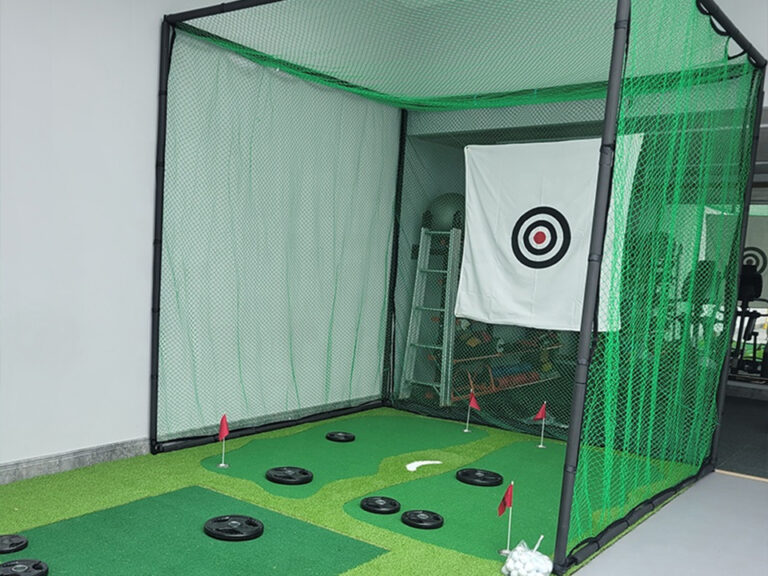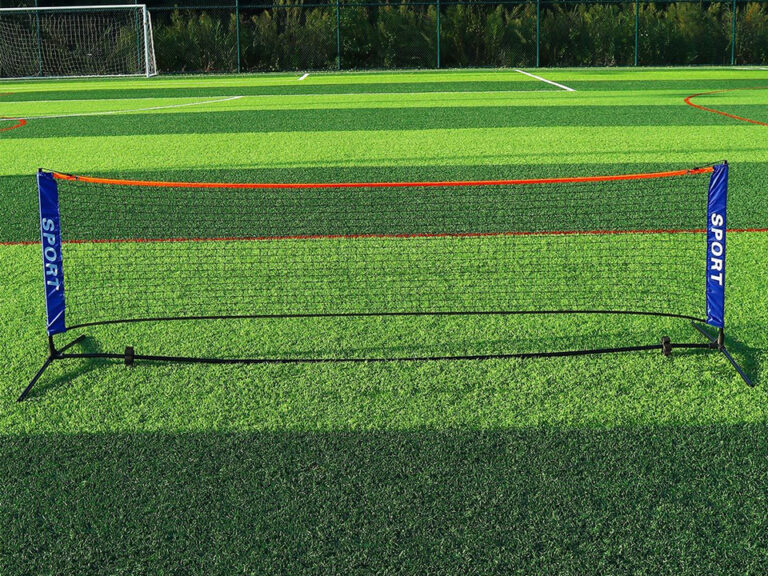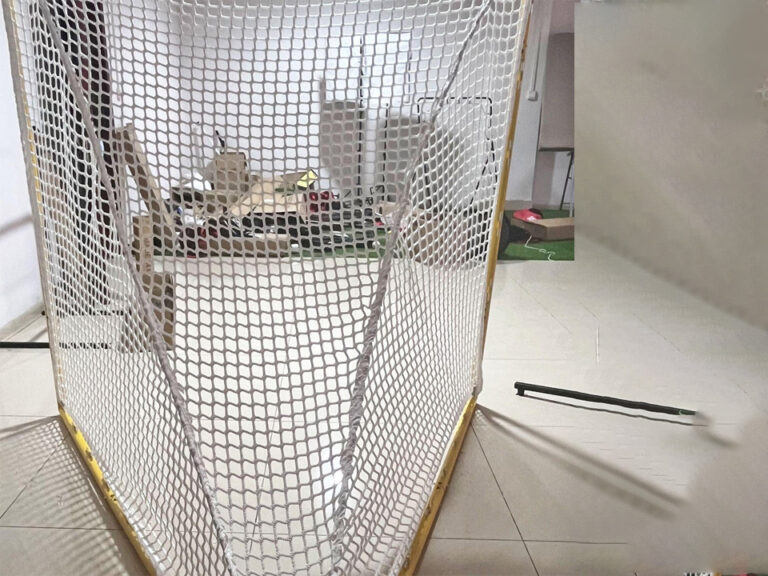Why Do Football Goal Posts Rust And Lean So Quickly
If you manage pitches or sell football equipment, you’ve probably had this moment: you walk out to the field, look at the posts, and think, “Wait… when did that thing start leaning?”
Let’s break down why football goal posts rust and lean so fast, what that means for safety and OPEX, and how smart use of nets and training gear can take some pressure off your hardware.
At FSPORTS, a top premium sports netting manufacturer in China, we hear these problems all the time from clubs, schools, and distributors.
We’ll keep it simple, practical, and close to real use on the field.
Table of Contents
Causes of Rust on Football Goal Posts
Moisture and Weather Exposure on Steel Goal Posts
Steel looks tough. But leave it in rain, dew, and wet soil all year, and it starts to lose the fight.
Common on-pitch issues:
- Water sits around the base of the uprights after rain.
- Grass, mud, and leaves stay packed against the posts.
- In coastal or humid areas, salt and moisture speed up corrosion.
Once the paint or coating gets chipped, bare metal meets oxygen and water. Rust starts at tiny points near welds or scratches and then spreads. From far away, it just looks messy. Up close, you’ll see pitting and flaking that weaken the tube wall.
Material and Coating Quality of Football Goal Posts
Not all posts are built the same. Lower-spec products often use:
- Standard steel pipe with thin paint only
- No hot-dip galvanizing
- Weak powder coating or no powder at all
Over time, that means:
- Faster rust at the base and joints
- More repainting cycles
- Shorter lifecycle and more downtime
Higher-end setups use galvanized steel plus powder coating, or they switch to aluminum for lighter frames. That’s why some posts stay clean for years, while others look old after two seasons.
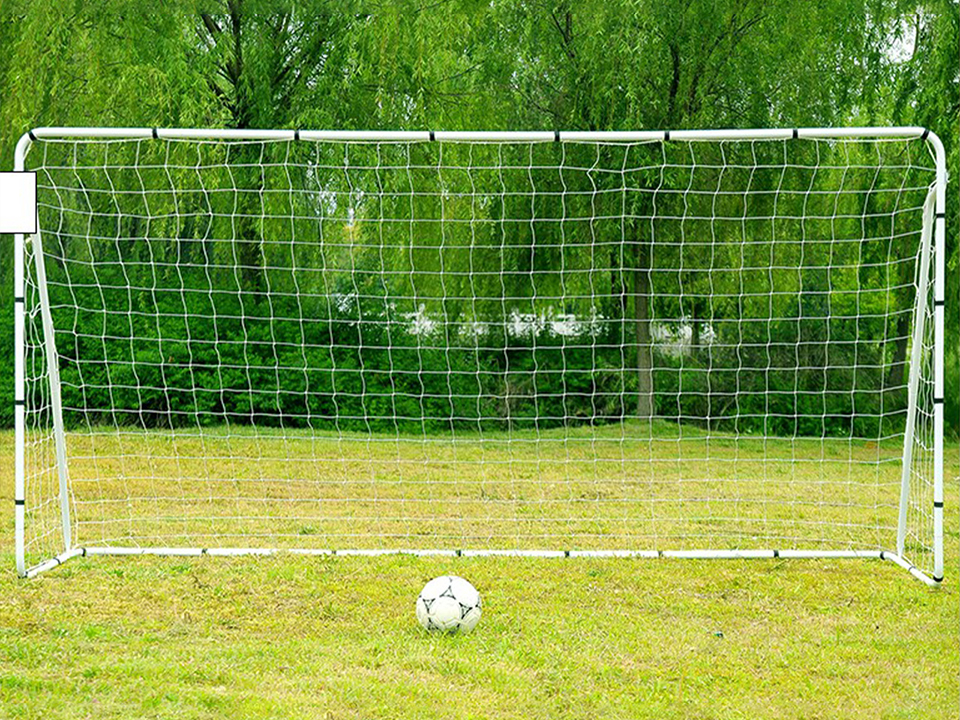
Why Football Goal Posts Lean Over Time
Extra Loads: Climbing, Shots, and Wind on Football Goal Frames
On paper, a goal post is designed for ball impact and wind load. In real life, it gets a lot more abuse:
- Kids hang from the crossbar after training.
- Players sit or swing on the goal.
- Strong wind catches the net like a sail.
- Grounds staff drag or push the goal sideways instead of lifting.
Every one of these moves bends tubes, loosens bolts, and stresses welds. Over thousands of impact cycles, the result is:
- Slight bending at joints
- Wheels and bottom frames going out of square
- Posts that “walk” out of plumb and start to lean
One practical way to reduce this abuse is to offload repetitive shooting drills onto dedicated nets, like a durable portable football net with foldable steel frame or a focused football trainer throwing net. These tools take the daily beating so the main goal doesn’t have to.
Foundation and Installation of Football Goal Posts
Even a perfectly built frame will lean if the ground support isn’t right.
Typical root causes:
- Concrete footing too shallow or too small
- Poor compaction around sleeves
- Uneven curing or frost heave in cold regions
- Soft soil or backfill that settles over time
Once the base moves a little, the top of the post can drift several centimeters. To the eye, the whole frame looks skewed and unprofessional, and it raises questions in any safety audit.
For portable goals, “foundation” is the frame geometry and weight distribution. If the base isn’t wide and stiff enough, or if counterweights are missing, the goal can lean or rock when players hit it or move it.

Key Reasons Why Football Goal Posts Rust and Lean (Summary Table)
You can use this as a quick reference when you talk with your team, your buyer, or your OEM partners.
| Main Cause | What Actually Happens | What It Means for Your Field |
|---|---|---|
| Constant moisture at base | Water, mud, and grass keep the steel wet; coating breaks down; rust starts at the bottom | Visible corrosion, ugly look, higher failure risk at ground level |
| Low-spec steel or thin coating | Basic steel pipe with light paint only, no galvanizing | Faster rust, more repainting, shorter replacement cycle |
| Extra load from climbing and hard drills | Players hang, push, and hit the frame beyond its design load | Tubes bend, welds and bolts loosen, frame slowly leans |
| Poor foundation or frame geometry | Shallow concrete, soft soil, or weak base for portable goals | Posts go out of plumb, crossbar sags, fails visual inspection |
| Lack of regular inspection and maintenance | Early rust spots and loose bolts go unnoticed | Small defects grow into structural problems and safety issues |
| Rough handling and bad storage | Frames dragged on the ground, dumped in the corner, left outside year-round | Bent corners, chipped coating, faster rust and frame distortion |
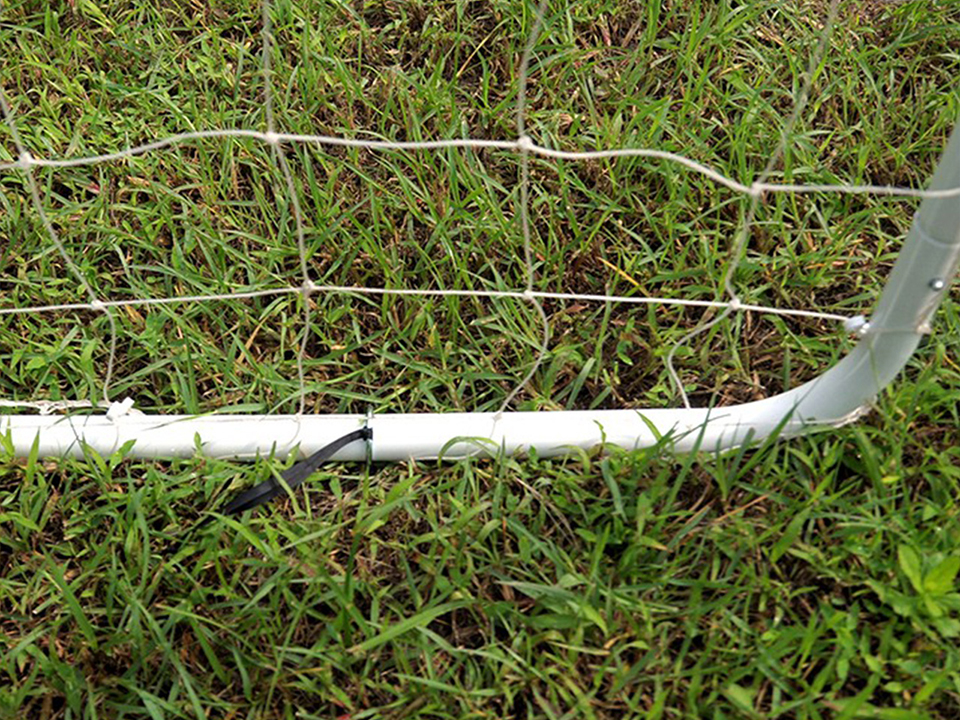
How to Prevent Football Goal Posts From Rusting and Leaning
You can’t stop the rain, but you can control the environment around the posts and how they’re used.
Football Goal Post Maintenance and Inspection Checklist
Here’s a simple checklist you can hand to your grounds crew:
- Weekly visual check
- Are the posts still vertical?
- Any obvious dents, bends, or cracks?
- Any loose or missing bolts?
- Monthly hardware check
- Tighten bolts and brackets.
- Inspect welds and joints for cracks.
- Check wheels and moving parts on portable frames.
- Quarterly corrosion control
- Clear grass, mud, and debris from around the base.
- Look for chipped paint or bare metal.
- Sand light rust and apply anti-rust primer plus top coat.
- Yearly safety review
- Confirm anchor depth and stability for fixed posts.
- Check nets, clips, and ties for wear and UV damage.
- Take out of service any frame with serious rust or bending.
This type of routine turns “surprise failure” into planned maintenance. You protect players and avoid last-minute field closures.
Use Football Nets and Training Systems to Protect Goal Posts
Another smart move is to shift heavy daily use from match goals to training systems and rebounders:
- For accuracy drills, use a professional goal throwing practise post football net instead of hammering the match frame all session.
- For arm-strength and QB-style work, a multi-sports net football throwing net 12ft takes repeated impact without stressing the goal posts.
- For youth and backyard sessions, a foldable portable football goal 2-in-1 children’s soccer net soaks up most of the casual play.
For clubs and schools, this isn’t just about comfort. It’s about lifecycle cost and liability. Training nets let you keep match hardware in top shape for longer, while still giving coaches all the reps they want.
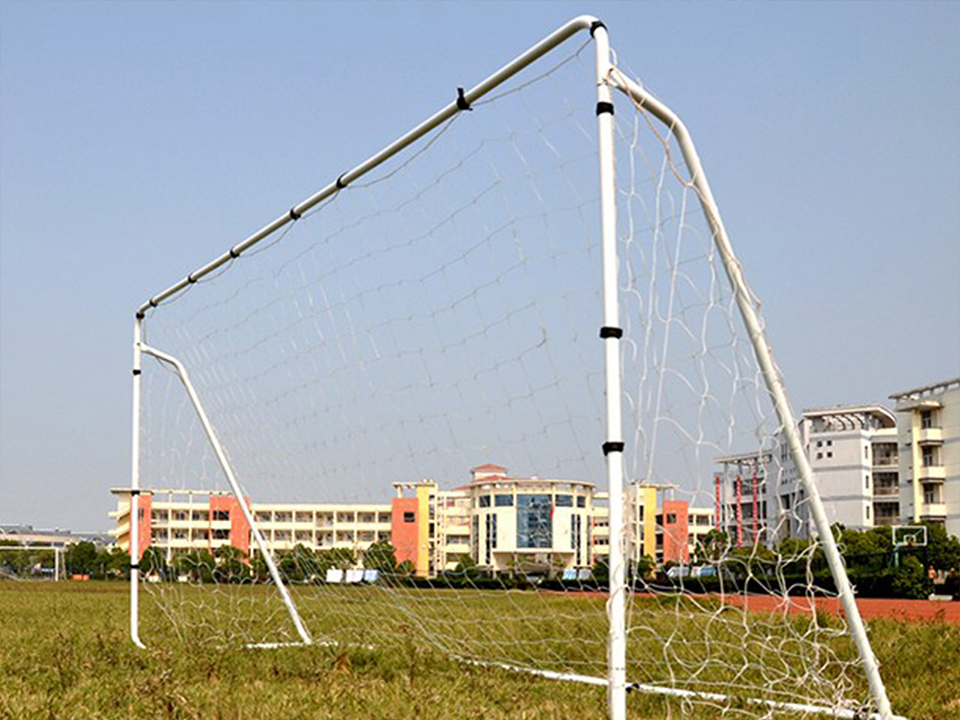
Real-World Use Cases for Safer Football Goal Systems
Football Goal Posts in School and Community Fields
In schools and community parks, you’ll often see:
- Old frames with visible rust near the ground
- Crossbars that already lean a few degrees
- Kids hanging from bars before and after class
Here, safety standards are high, but budgets and staff time are tight. That’s where robust yet portable options help. A sport-nets portable soccer goal bow-frame soccer net with carry bag works well for multi-use pitches where equipment needs to move and pack down fast.
Add in a barrier solution like a 12 ft x 9 ft sports barrier net behind the goal, and you cut the number of balls slamming the posts and fences, which reduces noise complaints and damage around the field.
Club and Academy Training Fields
Clubs and academies push hard volume: technical drills, finishing sessions, keeper work, small-sided games. This is where you see:
- High shot count every day
- Strict schedules and limited pitch hours
- Strong need to separate match setup from training setup
By building a training zone with dedicated nets, like an adjustable multi-sport net with rolling base and casters plus a mix of football-specific trainers, you:
- Protect main goal posts from overuse
- Speed up drill changes (just roll and lock the frame)
- Make it easier to manage groups at different levels
This is exactly where custom OEM/ODM solutions shine. Many partners work with FSPORTS to brand their own football nets and rebounders, align specs with their coaching model, and then push volume through retail or B2B channels.

Choosing Football Nets and Goal Accessories for B2B Buyers
If you’re a retailer, wholesaler, or OEM buyer, you’re not just thinking about one set of posts. You’re thinking about:
- Consistent quality across containers
- Clear spec sheets for steel, mesh, and coatings
- Fast swaps for damaged parts
- Packaging that works for e-commerce and storage
Browsing the FSPORTS product range, you’ll see lines of football, soccer, and multi-sport nets built around:
- UV-resistant netting for outdoor use
- High-impact mesh tested for thousands of shots
- Frames designed for quick assembly and easy transport
For more advanced training setups, items like a football kicking cage football net or a disc golf net and football net combo give coaches flexible tools while keeping match goals fresher and safer.
Final Thoughts: Keep Posts Straight, Keep Players Safe
Rust and leaning posts don’t happen overnight. They’re the result of:
- Constant weather exposure
- Material and coating choices
- Extra loads from players and wind
- Weak foundations and rough handling
- Gaps in maintenance
Tighten up those areas and add the right training nets, rebounders, and portable goals, and your posts stay upright, your fields look professional, and your risk profile drops.
That’s how facility managers, resellers, and OEM brands turn a basic piece of hardware into a more reliable, safer long-term setup—with smart netting and frame solutions behind it.

